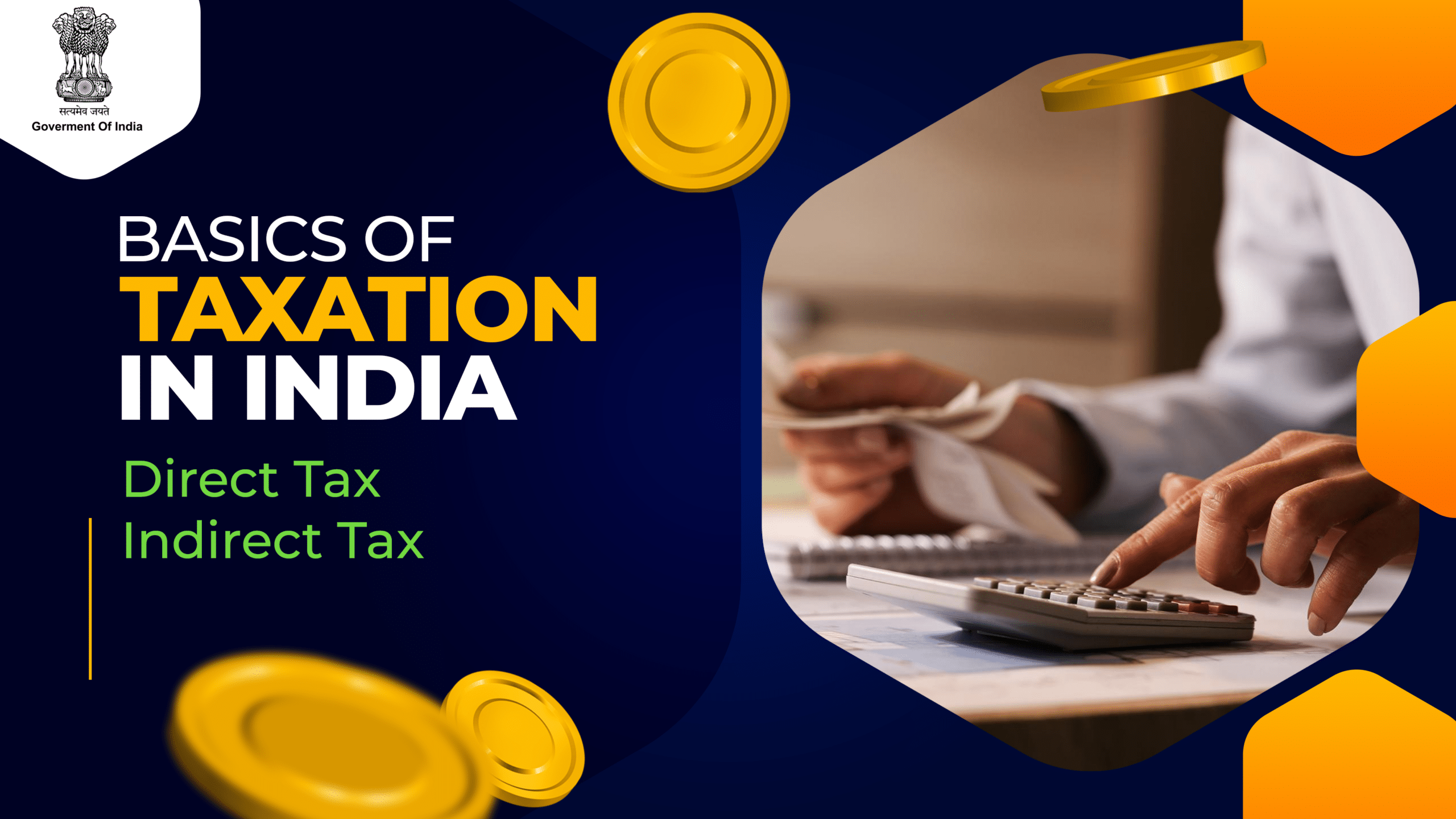- Horizonite
Simplifying India’s Tax System – Guide for Future Taxpayers
Tax is a critical component of every nation’s economy. It serves as the backbone for the government to fund various public services and keep the administrative machinery running. India has an intricate taxation system, comprising both direct and indirect taxes. It is no secret that tax is levied on almost all goods sold or services availed and even the earnings if it breached the threshold. With this article, we aim to provide an understanding of the Indian taxation system, its structure, and its significance for the growth of the country.

What is Tax?
A tax is a compulsory financial charge or some other type of levy imposed on a taxpayer, be it an individual or a legal entity by a governmental organization to fund various public expenditures. Taxes are a primary source of revenue for governments, enabling them to finance essential services and infrastructure such as education, healthcare, defence, infrastructure, and public safety.
Types of Taxes in India
The taxation system in India is broadly divided into two categories based on how they are collected and who ultimately bears the tax payment liability.
- Direct Taxes
- Indirect Taxes
Direct Taxes
Direct taxes are levied by either state or union government or local municipality corporation directly on individuals and organizations. These include income tax, corporate tax, property tax, and capital gains tax where the taxpayer directly pays the tax to the government. The tax burden falls directly on the entity paying the tax.
Income Tax
Income tax is one of the most significant revenue sources for the union and state governments. Depending upon an individual’s income, the Central Board of Direct Taxes (CBDT) collects the tax through multiple means. Tax collection happens in multiple means such as
- Tax Collection at Source (TCS)
- Tax Deducted at Source (TDS)
- Self-Assessment Tax Payment
- Advance Tax Payment
The tax rates are progressive, meaning they increase with higher income brackets. Income Tax applies only to the citizens of India and Non-Resident Indians with income sources within India’s boundary.
Corporate Tax
Corporate Tax is applied to the net income or profit of corporate entities like Limited Liability Partnerships (LLPs), Private Limited, and Limited Companies. It varies for domestic companies and foreign companies. Domestic companies are subject to a standard rate, while foreign companies are taxed differently based on their operations and agreements between India and their home countries.
Capital Gains Tax
This tax is levied on the profit from the sale of assets or investments, including real estate, stocks, bonds, mutual funds and metals. Depending upon the duration of holding the said asset or investment, it is further divided into Short-Term Capital Gains Tax and Long-Term Capital Gains Tax, accordingly changing the rate of taxation.
Indirect Tax
Indirect taxes are levied on goods and services. Goods and Services Tax (GST), customs duty, and excise duty are a few examples of indirect taxes. These taxes are collected by intermediaries like retailers from the end consumer, who ultimately bears the tax burden, and then paid to the government.
Goods and Services Tax (GST)
GST was introduced in the year 2017 by the Government of India to end the complex Value Added Tax (VAT) structure and unify all states on one platform. GST is a comprehensive, multi-stage, destination-based tax that has subsumed many indirect taxes previously levied by the central and state governments. GST is categorized into 3 types based on intra-state or inter-state transactions.
- Central Goods and Service Tax (CGST)
- State Goods and Service Tax (SGST)
- Integrated Goods and Service Tax (IGST)
The Goods and Service Tax rate list comprises four slabs, namely 5%, 12%, 18%, and 28% depending upon the goods or service. Some goods and services are also exempted from GST.
Customs Duty
This tax is levied on goods and services transacted to and from India. The rate varies based on the type of product and its origin. They are classified into two types based on the nature of the transaction.
- Import Duty– Tax levied on goods or services imported into India from other countries.
- Export Duty – Tax levied on goods or services exported from India to other countries.
This duty also balances the supply and demand of goods and services in the country. Import Duty could be raised to discourage the import of certain goods to protect domestic industries similarly Export Duty could be raised to discourage the export of certain goods to balance domestic demand.
Excise Duty
Excise duty is applicable on certain products like petroleum, tobacco and alcohol.
Tax Administration in India
The administration of taxes in India is handled by the Ministry of Finance through different departments. The key Government bodies overseeing the tax collection in India are
- Central Board of Direct Taxes (CBDT): Oversees direct taxes, formulating policies, and implementing tax laws.
- Central Board of Indirect Taxes and Customs (CBIC): Manages indirect taxes, ensuring compliance and collection.
Importance of Taxation
- Revenue Generation: Taxes are the primary source of revenue for the government, enabling it to fund infrastructure projects, social welfare schemes, and defence.
- Redistribution of Wealth: Progressive taxation helps reduce income inequality by taxing the rich at higher rates and using the revenue for public welfare programs.
- Economic Stability: Through taxation, the government can influence economic activities, control inflation, and stabilize the economy.
- Encouraging Savings and Investments: Tax incentives and deductions encourage individuals and businesses to save and invest, fostering economic growth.
Conclusion
Taxation is a vital aspect of India’s economy. It is crucial for the nation’s development and stability. Though it may appear complex, understanding the basic structure and purpose of taxation helps individuals to navigate the system effectively. While there are efforts to simplify and transform the tax system, it is our responsibility to be an honest taxpayer and be part of India’s growth story. As a future taxpayer, your contribution helps in the country’s prosperity.
Frequently Asked Questions (FAQs)
Tax Deducted at Source (TDS) is the income tax deducted when making certain payments such as salary, commission, interest, rent, professional fees, etc by the person or entity making the payment. The TDS will be remitted to the government by the deductor against the payment recipient.
Import Duty is a customs tax that is levied on the import of certain products and services. Depending upon the value and category of goods/services, import duty varies. It is also called an import tax or import tariff.
The due date for filing Income Tax Returns is July 31st of every year. For example, income tax on income between April 1st, 2023 to March 31st, 2024 should be filed on or before July 31st, 2024.
Financial Year (FY) is the year in which an individual or an entity earns income, while Assessment Year (AY) is when the income is assessed and taxed. For example, for income earned between April 1st, 2023 to March 31st, 2024, 2023-24 is the Financial Year and 2024-25 is the Assessment Year.
Certain products and services are exempt from GST. Newspapers, books, journals, postal items, milk, live animals, stamps, human blood, contraceptives, pooja items, vaccines, organic manure, and many more attract 0% GST.






